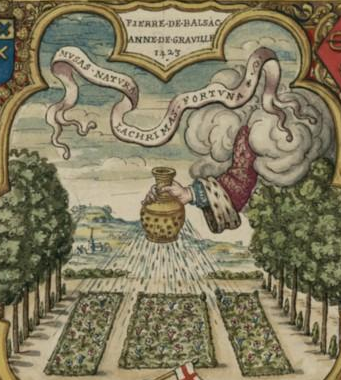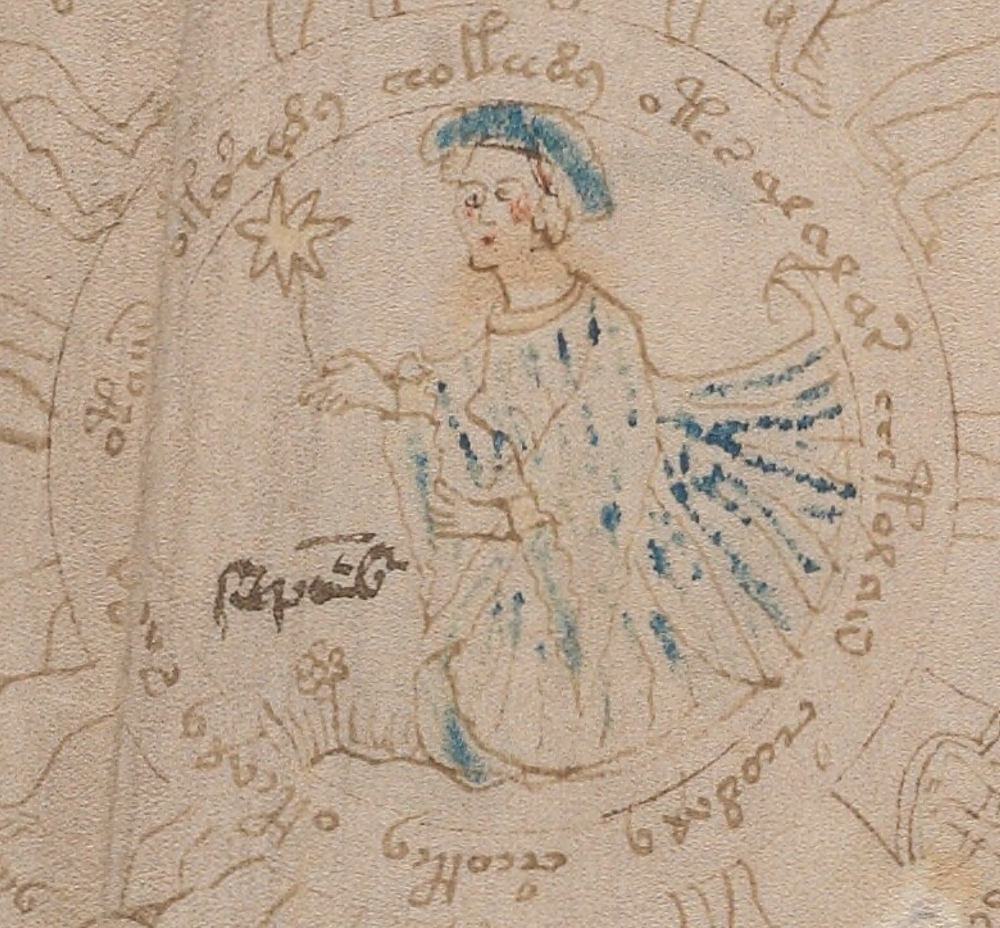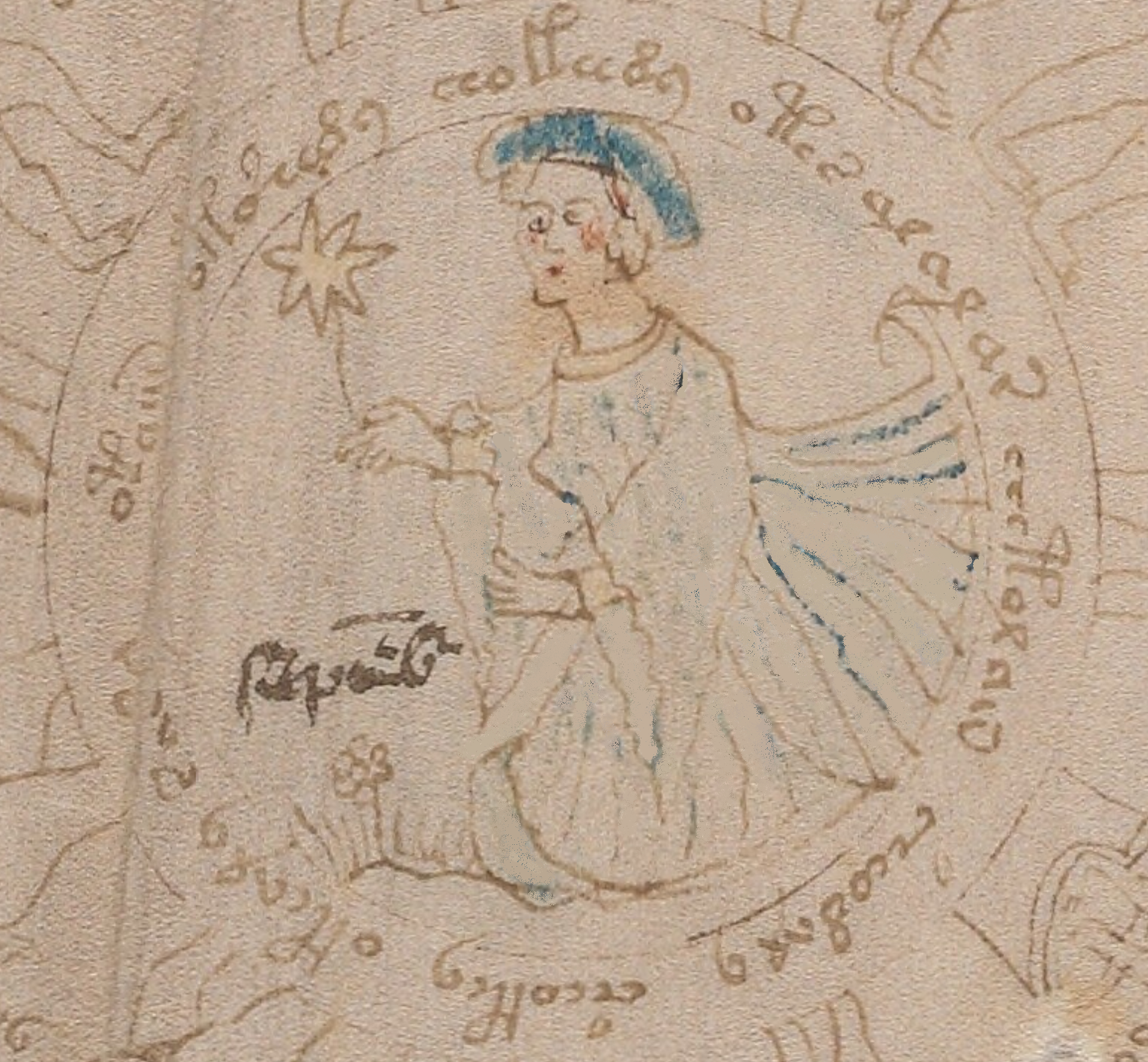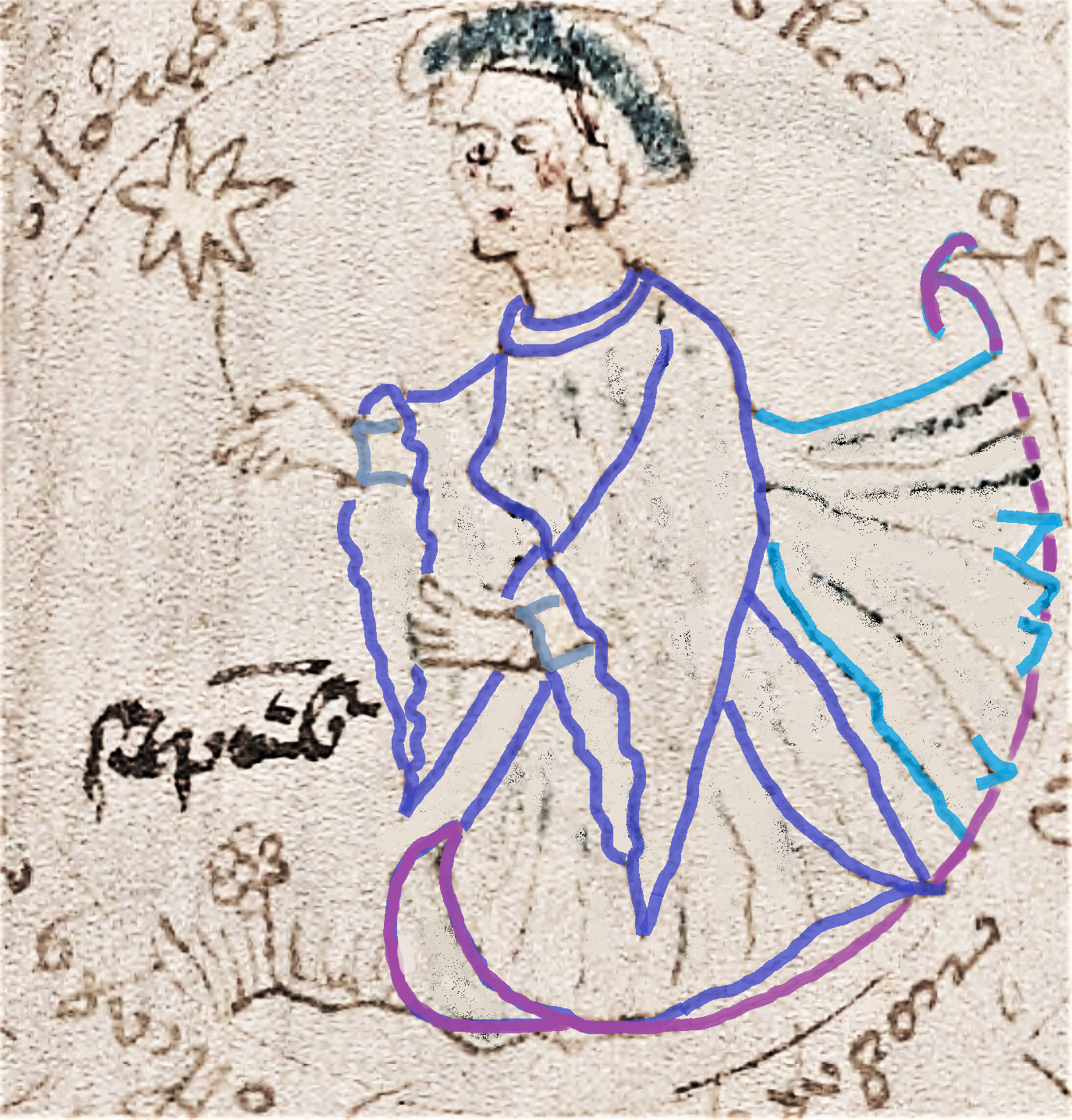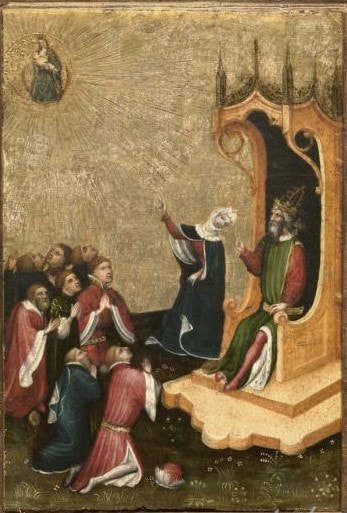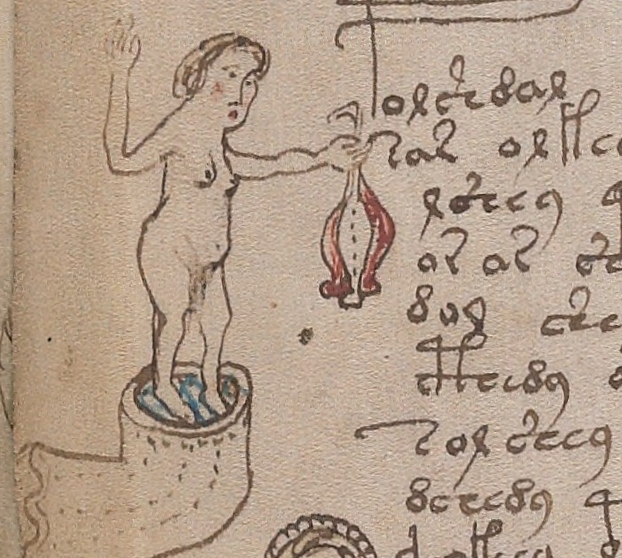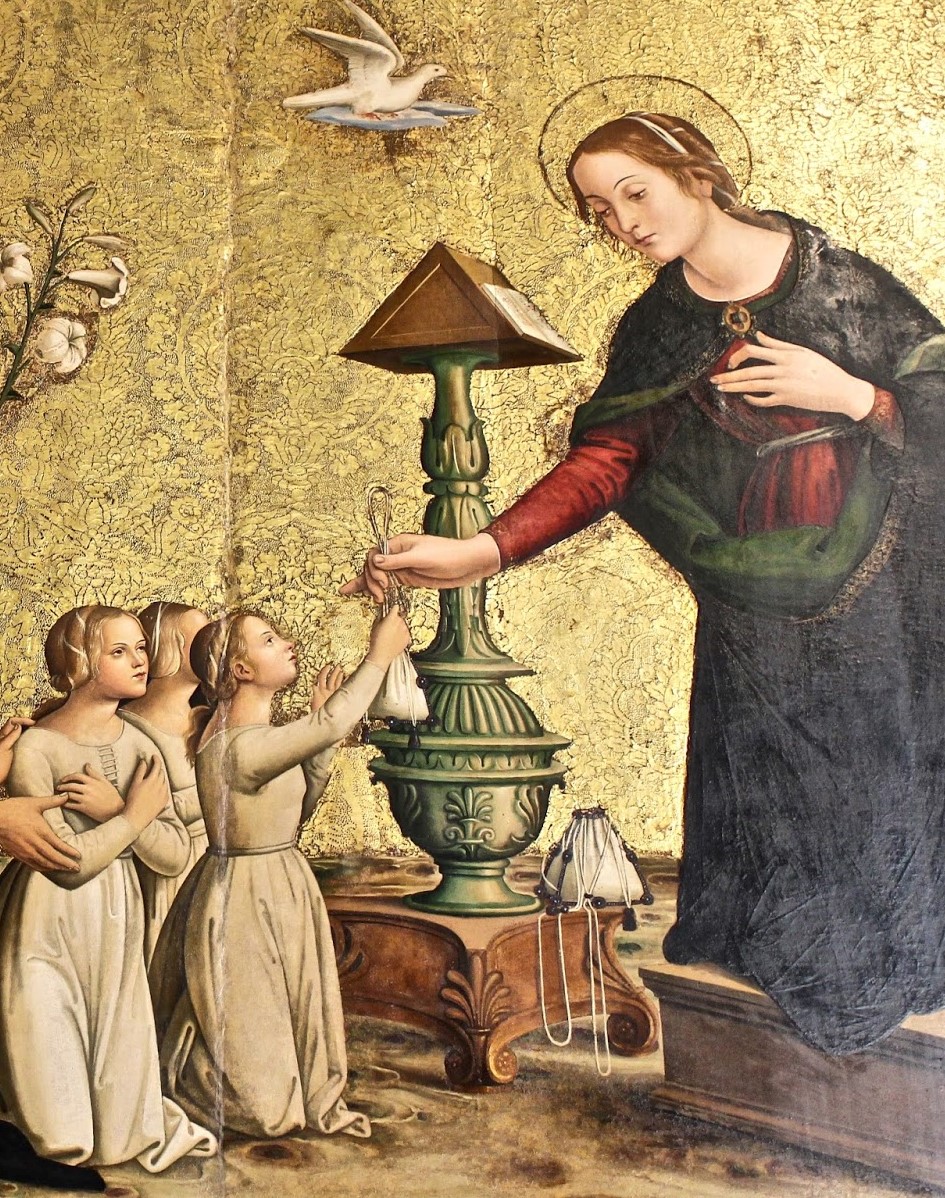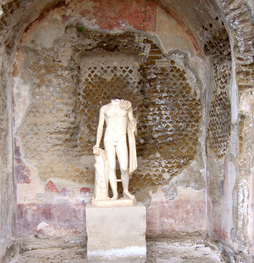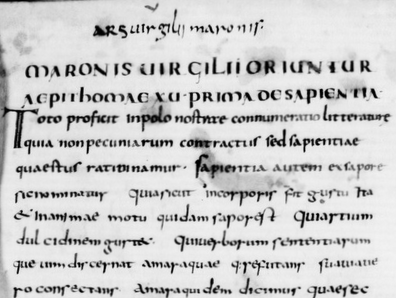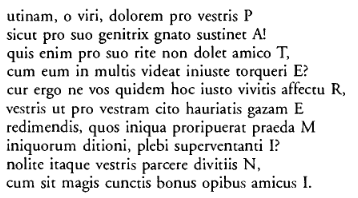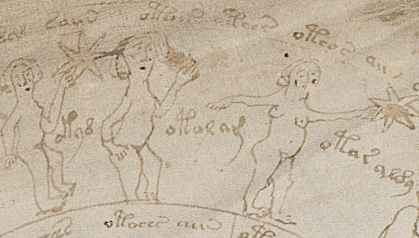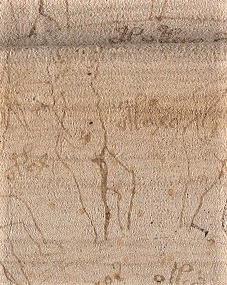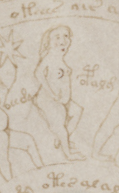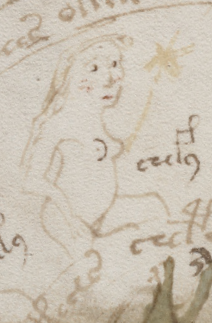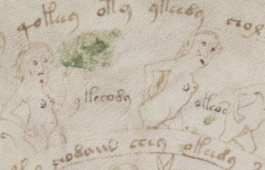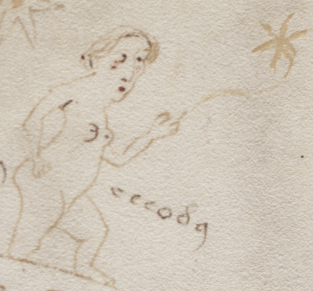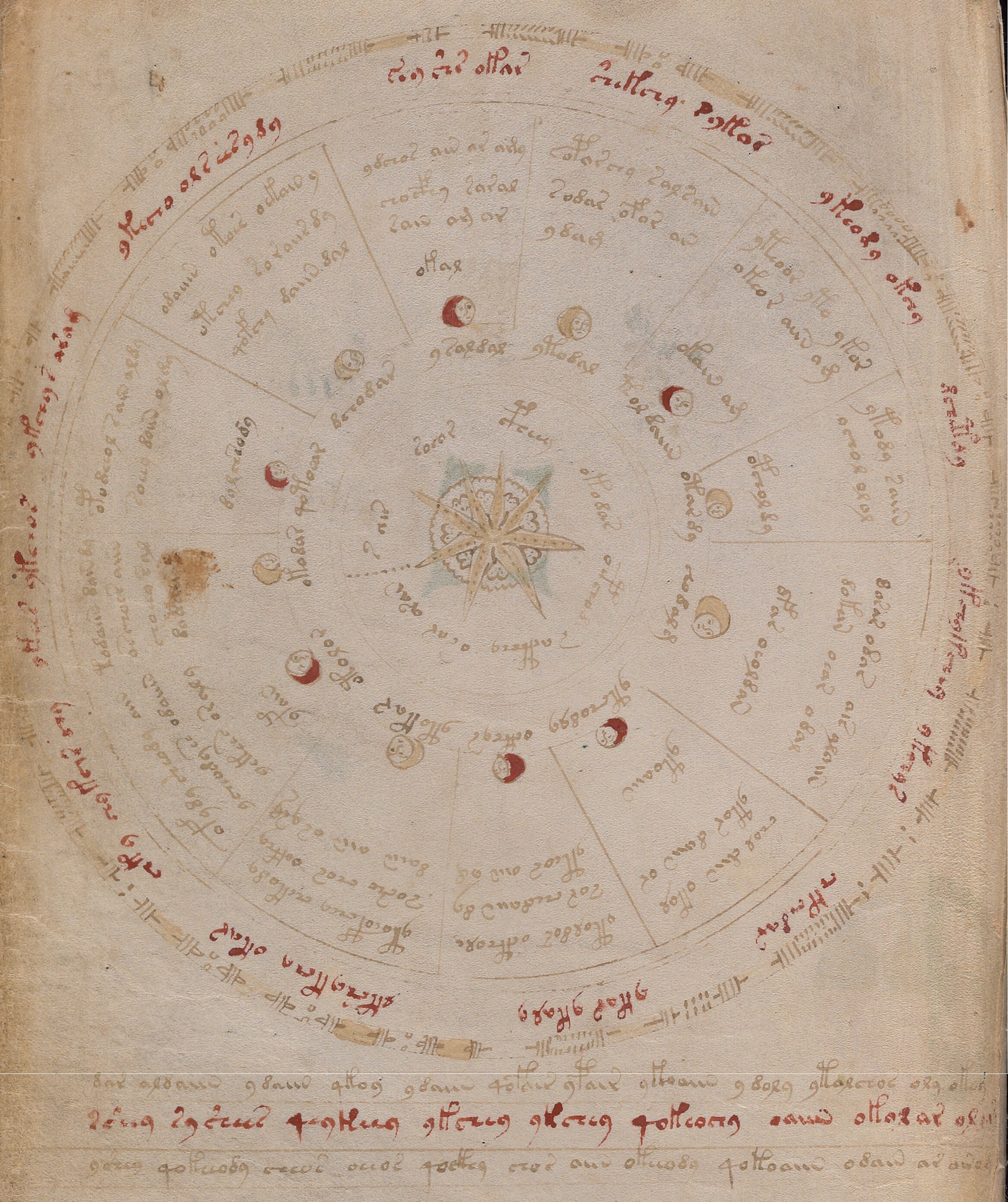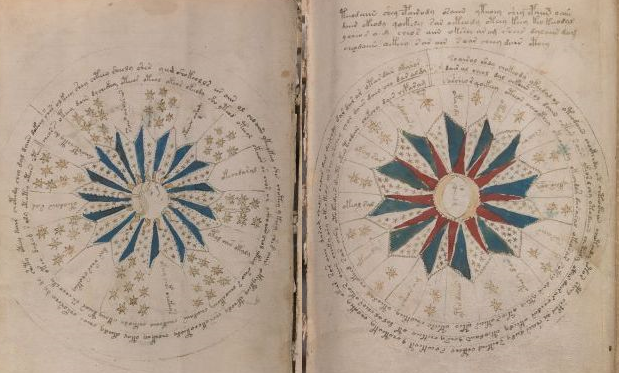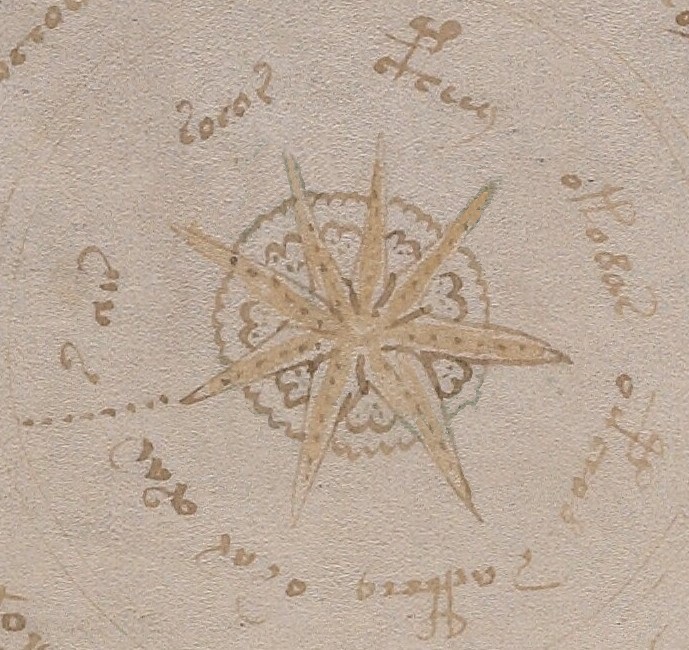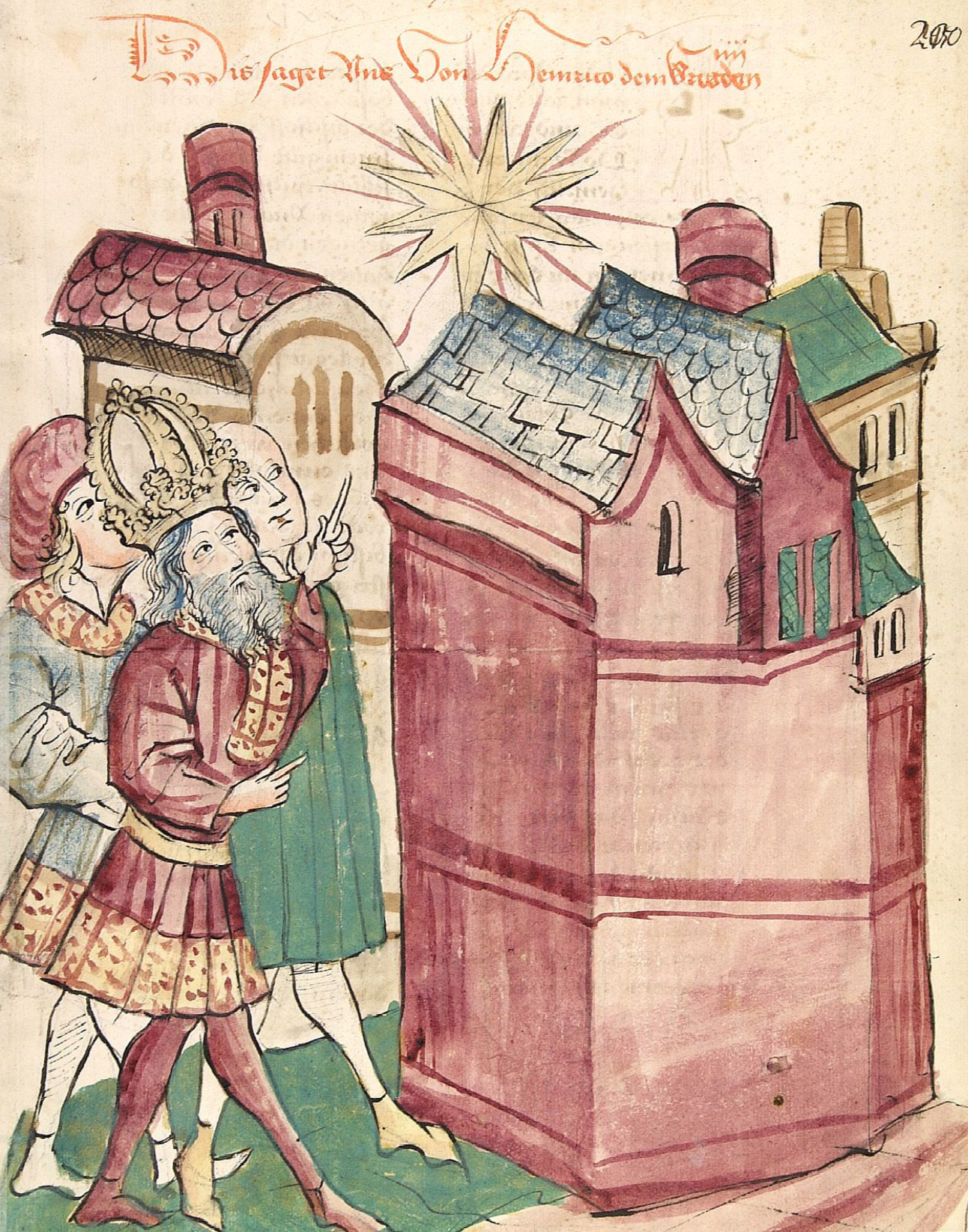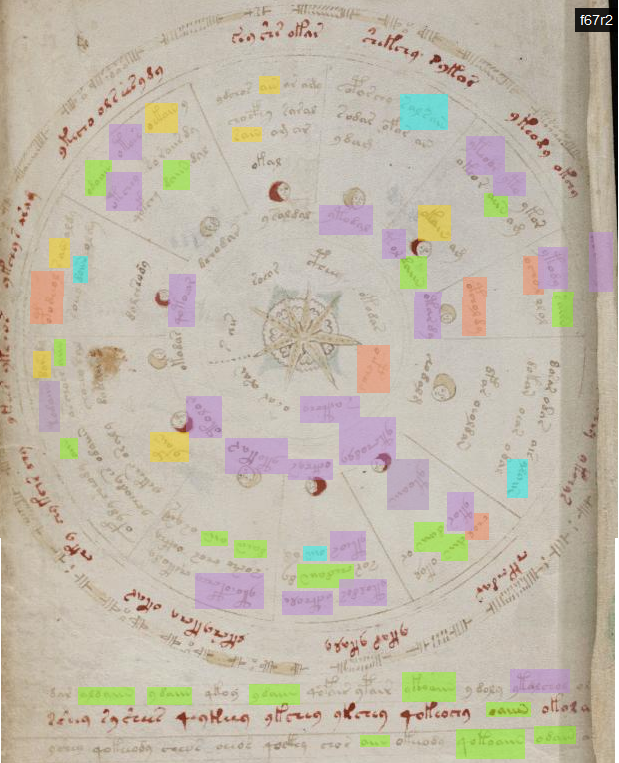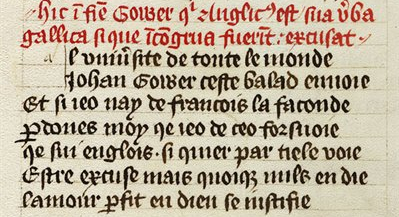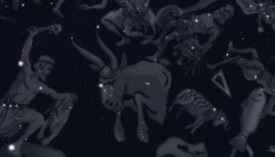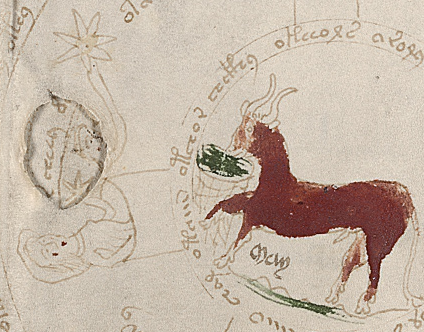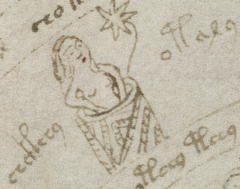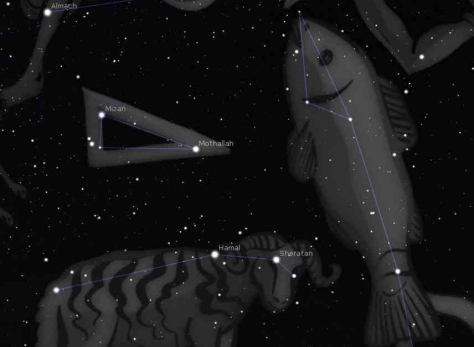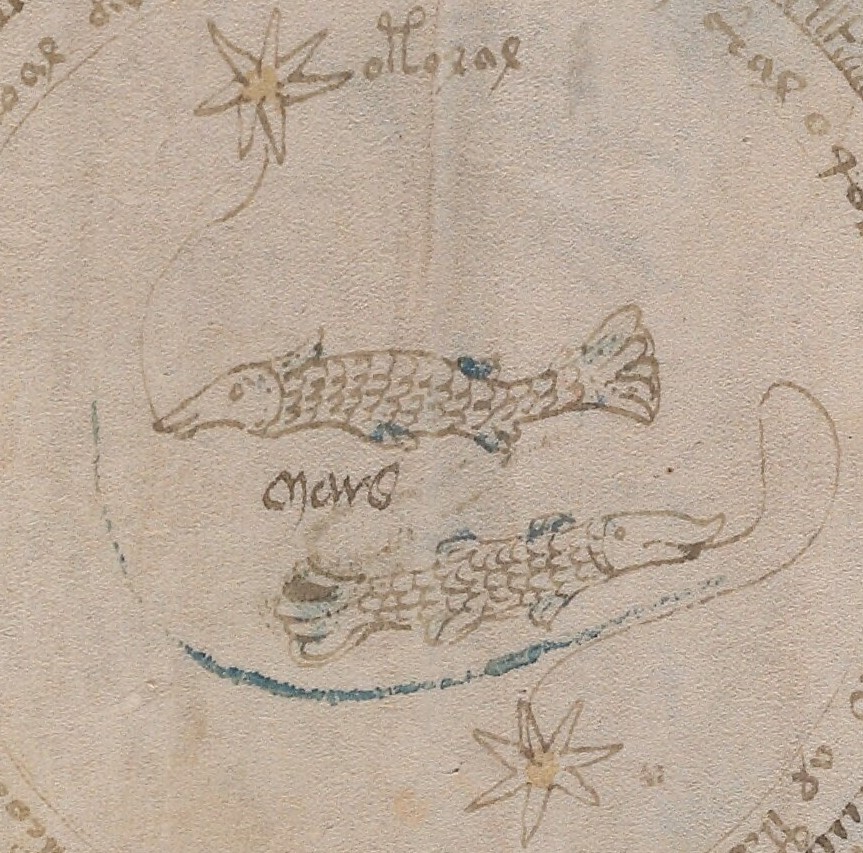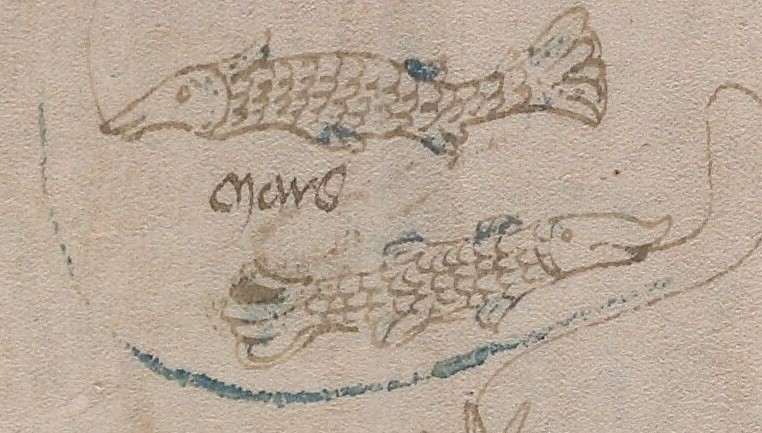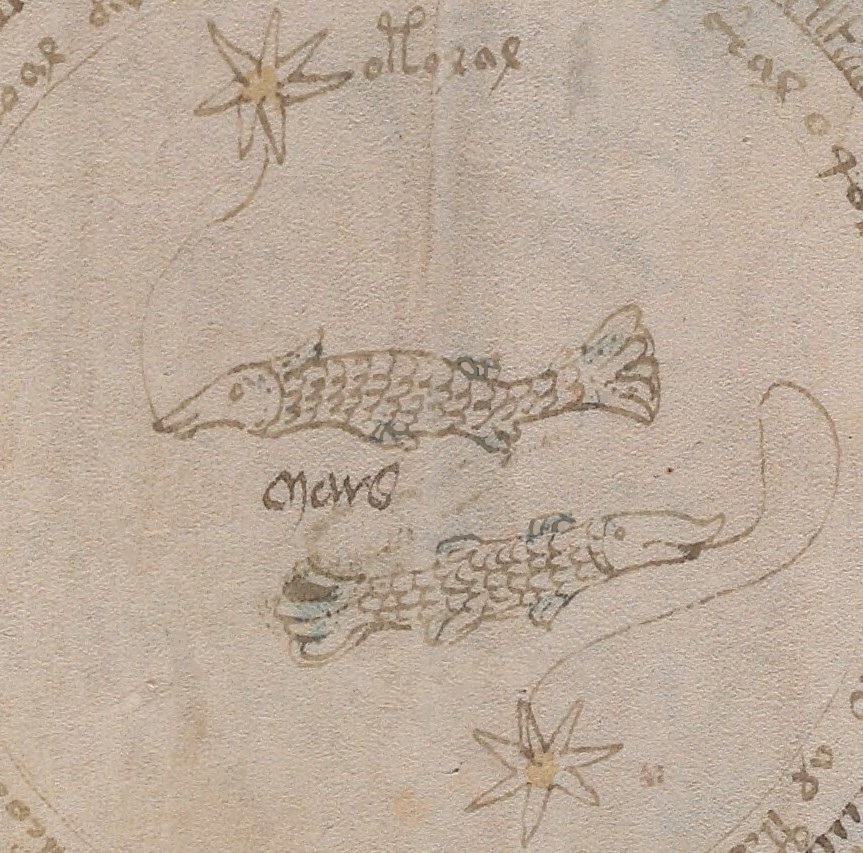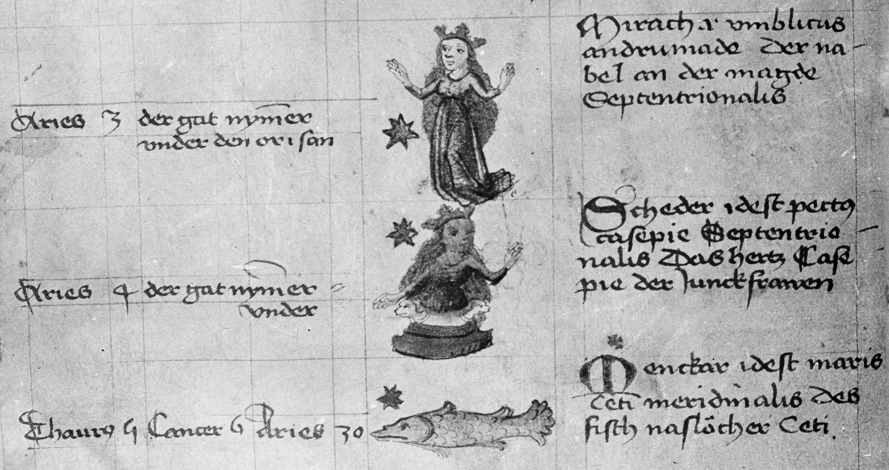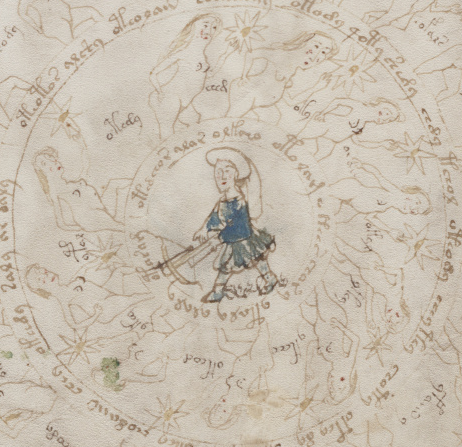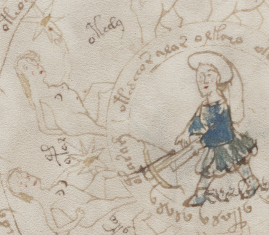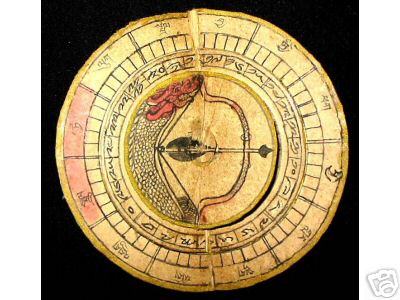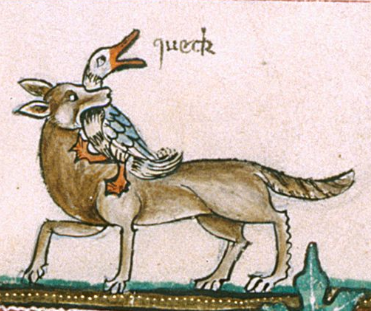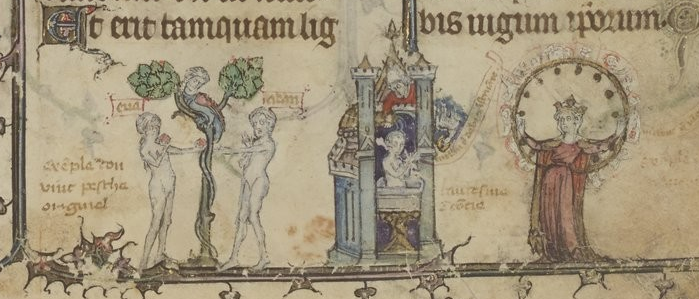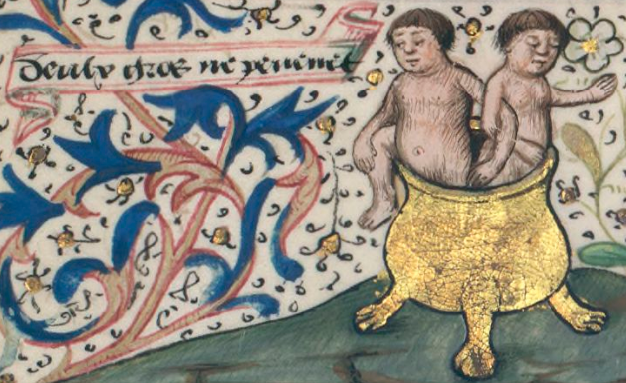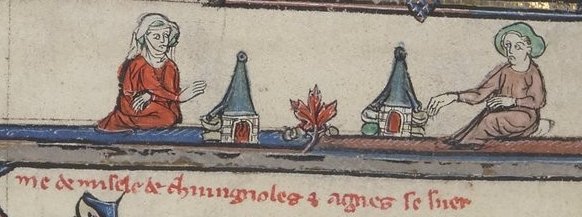Many interpretations of the imagery in Quire 13, and of other parts of the Voynich manuscript, are based on the idea that the images stand for, embody or represent something else, and feature clues that would have led the reader to remember or understand a reference. In other words, that they are, or contain, mnemonic devices.
If we suppose that the Voynich contains mnemonic devices, then it seems interesting to me to look at some other 15th century manuscripts in which the illustrations are explicitly designed to function that way. In this post I will explore Mnemonic Bibles and how they jog the reader’s memory to bring to mind a reference. How did their mnemonic devices really work?
Making things difficult
Our present-day understanding of mnemonics is that, as it is a memory aid, it should simplify things and make them easy, by relying on the most obvious, prominent aspects of a thing.
This idea of making things easier is actually at odds with some of the mnemonic techniques developed in the middle ages. As explained in a previous post about Virgilius Maro, some mnemonics actually worked the opposite way, by making things difficult, so that once the meaning had been painstakingly elucidated, the thing which had taken so much effort would be more likely to stick in the mind of the reader. According to Dolezalova (2012) this approach is rooted in Augustine’s statements in De Doctrina Christiana 2.6, where he talks about obscurity in writing “for the purpose of subduing pride by toil, and of preventing a feeling of satiety in the intellect, which generally holds in small esteem what is discovered without difficulty”.
As Virgilius Maro stated, another purpose of the difficult mnemonics was to help train the “acuteness of perception”. It also ensured a certain degree of confidentiality (or manifested a form of elitism), as without a certain degree of erudition, the thing being referenced could not even be guessed at by the lay reader.
The set of manuscripts which I will be focusing on here is related to this type of difficult mnemonics, and forms a group known as the “Mnemonic Bibles”. This refers to a number of bibles which were produced in Germany in the 15th (manuscript) and 16th (printed) centuries, a discussion of which can be found in JM Massing’s essay, “Late Medieval Mnemonic Bibles” (in Berns & Neuber’s Ars Memorativa, 1993, pp 101-115). In these bibles, like in the Marginal Psalters group discussed in previous posts here and here, the illustrator worked within a limited space, although in this case it was not the margin that confined the illustrations, but the ten small cells each page was divided into.
These bibles do not really belong to the same tradition as the Velislav Bible or the “biblia pauperum” genre, which had a very different layout, message and intended audience. Both contain mainly images and little to no text, but the biblia pauperum is designed for a wider audience, which can easily identify the episodes being explicitly depicted, and plainly see the link between events in the old and new testament. This is the type of mnemonic most often discussed regarding Voynich illustrations: a reference to a story through the representation of its best-known features.
The Mnemonic Bibles, on the other hand, function differently, and were designed for a very restricted readership: they represent biblical episodes in a way that is not recognizable for most people. Knowing the stories in Bible doesn’t help: one must already have impeccable memorization of the exact words of the text itself, as a member of the clergy would, to “get” them. They are not so much a “memory aid” but more of a memory challenge.
The illustrations in the Mnemonic Bibles are a fascinating pictorial resource, both for examples of the way certain things could be depicted, and for the often obscure way this branch of medieval mnemonics worked. It is not a coincidence that these bibles are often bound together with either a Cisiojanus, or Petrus of Rosenheim’s Rosarium Memoriale, both of which render texts with comparable obscurity for mnemonic purposes.
In a few cases, the Mnemonic Bibles do represent things in a fairly explicit way. Noah’s ark is shown for the Flood in Genesis, or a burning bush for that passage in Exodus. But overall, these are only a tiny minority, and the recognizable mnemonics are vastly outnumbered by the obscure ones.
For example: A famous biblical passage is depicted below in the books of Matthew and John (I have blacked out one telling annotation: like all the “labels” and notes in these bibles, it was added later anyway). Can you guess which biblical passage these are illustrations of?
Highlight the following lines to show the answer:
It’s the Baptism of Christ! When we think of this passage, our mental image (and indeed most medieval imagery) would involve two people standing in water: an outdoor baptism scene. But in these bibles, the baptism of Christ is represented by… a shoe. This is in reference to John the Baptist’s description of Jesus as the one “the latchet of whose shoe I am not worthy to loosen” (John 1, 26-27; see Massing, op. cit, p. 111). The mnemonics in these bibles forego the obvious imagery we are used to seeing, relying instead on specific words or phrases from the text to trigger the memory of the whole section of text. The goal is not to remember a biblical episode – that is something the intended user presumably would not need help with! – but to reference the exact words of the text in that chapter.
Though the extant Mnemonic Bibles slightly postdate the Voynich (Massing estimates them to have been produced between 1441-1493, although the exact date and place of production is not known for any of them), the mnemonic codes used in them derive from those set by Petrus von Rosenheim (1380-1433). Rosenheim’s works and system will be presented in greater detail in my next post.
The three Mnemonic Bibles I will be relying on in this post are the only ones that are available online: Providence Public Library Wetmore Ms. 1, Wurtzburg University Library M.p.th.o.6, and the oldest one, Munich Bayerische Staatsbibliothek Clm. 697. There is also another one (Rosarium Bibliae ) which was sold by Christie’s in 2011, and a few pages can be viewed on their website. The other two (Cambridge Fitzwilliam MS 11 and Munich Bayerische Staatsbibliothek MS 23356) I couldn’t find digitized, but would be very grateful if anyone has a link to scans, or knows of any other mnemonic bibles in this tradition that I may have overlooked. As Dolezalova explains, one of the challenges in finding these and other bible summaries is that they often have either no title or a very generic one, making them hard to identify in catalogs.
It would be impossible to cover all the mnemonic devices these bibles use in a single post, so I’ll just focus on some of the more intriguing depictions of fluids to illustrate how these mnemonics work.
Pluet
Psalm 11, referring to the fate of the wicked, mentions that “Upon the wicked he shall rain snares, fire and brimstone, and a horrible tempest, this shall be the portion of their cup” (Pluet super peccatores laqueos; ignis et sulphur, et spiritus procellarum, pars calicis eorum), and these bibles use this single verse (verse 6) as the central feature for the mnemonic for the whole seven-verse psalm (also included are the eyes from verse 4). By chance, on one of the pages featured on the Christie’s sale site, this passage from the Psalter is shown, so in this case we actually can see four examples of the same mnemonic:
The unusual pot-like shape represented here represents the verb “pluet“, from “he shall rain”. Why not simply show raindrops? The illustration allows the viewer to understand that this is not ordinary rain, but a special, divine act of raining that is being referenced. Although this might seem surprising, we will see in further examples how similar pots recur thoughout the mnemonic bibles.
Rore
A similar shape appears in Genesis 27, where Jacob tricks an elderly Isaac into mistaking him for his brother Esau. Like in the baptism of Christ example given earlier in this post, the mnemonic for this passage is not the obvious scene (Jacob receiving the blessing from Isaac as his stunned brother Esau looks on), but an image drawn from a single word in the 46 verse text.
In the above example, the mnemonic is based on the word “rore/in rore“. Rore (a form of ros) means dew, which is one of the words Isaac uses in his blessing to Jacob (“May God give you Heaven’s dew” – Det tibi Deus de rore cæli). However, once the deception comes to light, Isaac then gives the following blessing to his son Esau: “Thy dwelling shall be away from the dew from Heaven above” (in rore cæli desuper, erit benedictio tua). While rore means dew, inrore means to sprinkle, specifically like light rain and dew. The artist in the mnemonic bible may have used the pot as a mnemonic for rore or he may have played on the word break, showing the verb inrore (to water) for in rore.
While it is possible to learn the meaning of the pluet and rore mnemonics, I struggle to understand where this iconography comes from. So far, I have not found any source for the elaborate type of containers that are represented here. It is however difficult to imagine that such a motif would have appeared spontaneously, so there must be some reference here that I am missing.
Effundere
There is another form of “container spilling liquid” used as a mnemonic in these bibles, which takes on a much simpler form than the pluet and inrore pots.
We find a hybrid version illustrating Psalm 69. Here, the upturned pot doesn’t reference pluet or rore. Although it may at first look akin to the pots previously discussed, the Munich version allows us to understand that it is a different type of image. It illustrates the verse 24 phrase: “Pour out thine indignation upon them” (Effunde super eos iram tuam). In the Wurtzburg and Wetmore versions, the upturned pot image is fused with that of a cup, making it look like the complex containers, but it is actually a joining of two separate mnemonics: the aforementioned phrase, combined with a cup (presumably the vinegar David is given to drink in verse 21).
Another example is Psalm 41, shown above (almost hidden in the Wetmore scan, badly worn out in the Munich). The text the mnemonic refers to is 41:2-5: “These things I remember as I pour out my soul”(Hæc recordatus sum, et effudi in me animam meam).
Here, it is the soul that is being poured out. This allows us to better understand how the mnemonic works: it is not meant to directly illustrate a meteorological phenomenon, but the verb, the act of pouring, shown by an upturned cup and fluid flowing downwards.
This is confirmed in the illustrations of the book of Hosea, where we can compare two different mnemonics on the same page. There are four examples below, as the Christie’s site includes this page.
Here we can see normal-looking precipitation in the rightmost cell, while the left-hand cell shows the “upturned container” style of representation. The text gives a clue as to why these coexist, and the difference between them.
On the left is Hosea 6: “he will come to us like the winter rains, like the spring rains that water the earth” (veniet quasi imber nobis temporaneus et serotinus terræ). In the upper right, it is Hosea 5: “And I will pour out my wrath upon them like water” (super eos effundam quasi aquam iram meam). Hosea 6:3 mentions rain, not pouring, so rain is drawn. In Hosea 5:10, it is the verb “effundam”, the act of pouring, that is represented via the upturned pot.
We see this again in Ezekiel 36:25, (Wurtzburg 57v, Wetmore 59v) “I will sprinkle clean water on you, and you will be clean, I will cleanse you from all your impurities (Et effundam super vos aquam mundam, et mundabimini ab omnibus inquinamentis vestris). The English is misleading here: effundam translates as “pour”, not “sprinkle”.
Turbinem
In 2 Kings 2, Elijah is taken up by a whirlwind (turbinem) into Heaven. This segment is represented in all three mnemonic bibles; in two of them (Wurtzburg and Wetmore), the whirlwind is represented as a kind of twisty cone descending from the sky, which sort of looks like a horn. In the other example (Munich), the whirlwind is represented in a longer, more elaborate style which seems to feature segments or rings, and reaches all the way down to the water below.
As in the in rore example, the illustrator has again foregone traditional biblical iconography for the scene, which usually shows Elijah and the much more dramatic vision of the chariot of fire with horses of fire that actually take him up in the whirlwind. But the word turbinem is quite rare in the Bible, only appearing four times, two of which are in 2Kings, whereas chariots, horses and old men are much more frequent. So remembering that specific word would be a better mnemonic in being able to tell that specific story from memory. I am however puzzled by the representation of the river Jordan as a pool. The text in that chapter mentions the river being divided by Elijah and then by Elisha, so I wonder if a pool is a way of showing a divided river or if it is just the lack of space that leads to this shape.
Back to the Voynich Manuscript
Might this last image from the Wurtzburg bible provide an explanation for the illustration we see in the bottom right corner of Voynich f80v? Is the nymph being swept up by a whirlwind? Might this little scene be an illustration of the single word “turbinem” somewhere in the text nearby?
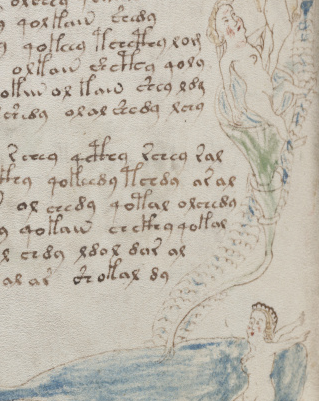
More generally, if this type of mnemonics was used in the Voynich manuscript, then the the nymphs in the Q13M illustrations, might similarly be embodying a single word from the adjacent text, such as “pour”, “sprinkle” or “whirlwind”.
In closing, some notes from my research on iconography.
Studying the pots in these bibles, I couldn’t understand the iconographic origin of the unusual containers used to represent pluet and (in)rore. What might their strange appearance reference? I still haven’t found any fully satisfactory parallels.
One potential candidate I investigated is the chantepleure (cantaplora), a variant of the clepsydra. This device, described by Aristotle and Averroes, is depicted in early medieval Christian baptism scenes, and survived the middle ages as both a bathing tool and a watering can for gardens, where it’s ability to pour gently mimics natural watering from rain. Its name is derived from the sounds it makes when in use: it sings (or gurgles) when it is being filled, and cries when it is being emptied. It is shaped differently than the pots in the mnemonic bibles, so I am far from certain that this is where that imagery comes from, just offering what little I found.
Some support for a chantepleure origin theory might be seen in the following emblem , although it is from 1537: it centers around the theme of the chantepleure (see text in scrolls), and also references Genesis 27 (de rore…) prominently in the upper scroll. The actual chantepleure is drawn at the bottom.
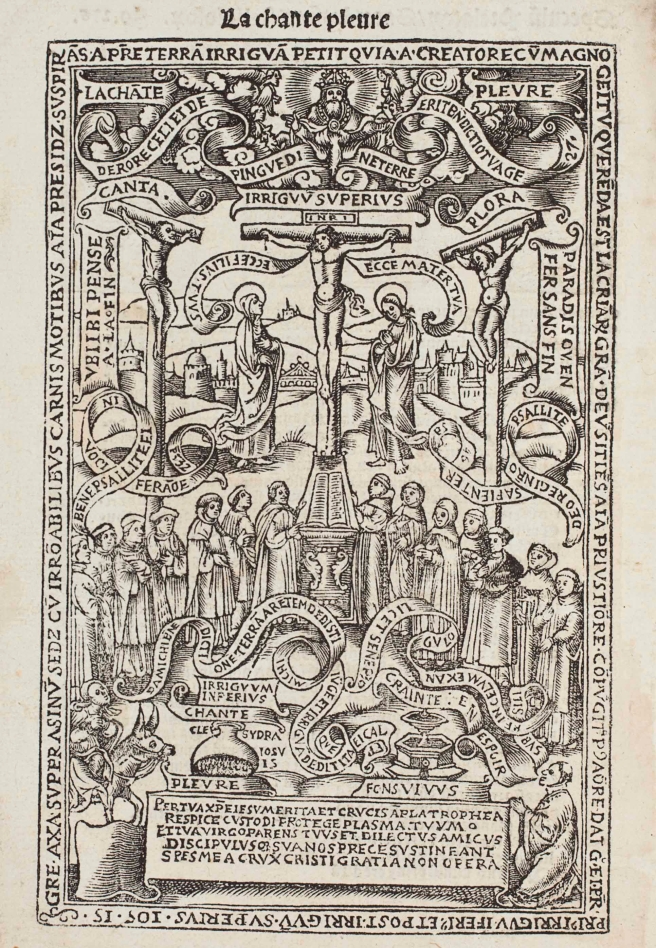
Another example of a divine hand using a chantepleure to water a field, while the scroll text mentions tears, in a later reproduction of the 1423 arms of Anne de Graville:
